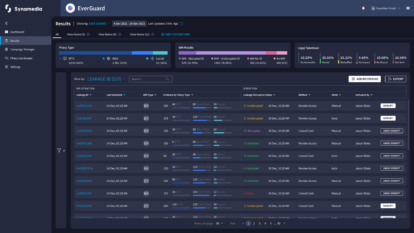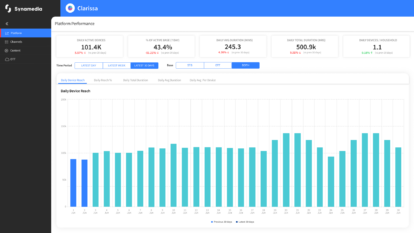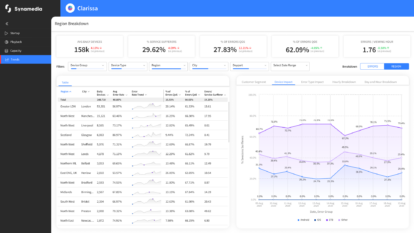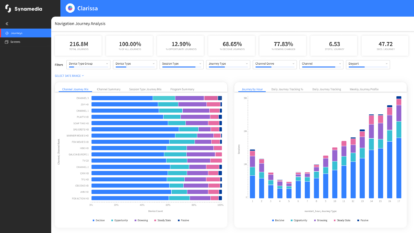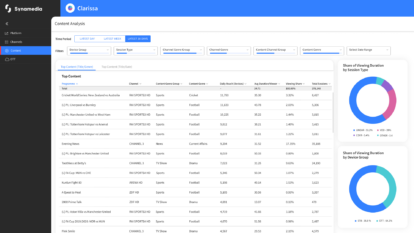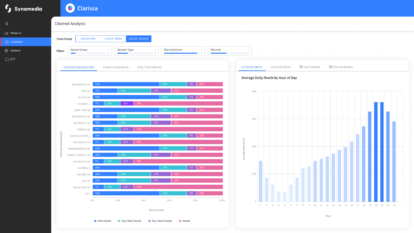For decades, the “business as usual” model of relying on on-premise devices and on-device apps has dominated the landscape of content delivery — whether it’s movies and TV shows or digital signage — but this traditional approach is quickly becoming a liability in today’s cloud-first world.
While the model of a so-called “thick client” has been a cornerstone for the media and entertainment industry, its limitations are becoming increasingly obvious in a cloud-first world that rewards agility, innovation, and cost-efficiency. It begs the question, is this approach still relevant and fit for purpose?
Spoiler alert: the answer is no!
What is an on-premise thick client device?
Terminology check, let’s start with the basics. The term thick client (also referred to as a heavy client or fat client) refers to a device that hosts all of the hardware for performing common tasks. These include operations like graphics rendering, data processing, and local storage. A lot of client devices are connected to servers (aka the cloud) and they’re located somewhere physically separate to that server (hence the term “on-premise” or “on-prem”). Thick clients are everywhere, common examples include: TVs, streaming sticks, game consoles, laptops, and smartphones.
The diagram below shows, at a high-level, the relationship between a thick client and the server-hosted elements it relies on to function. It’s important to note that there are good reasons for choosing this architectural approach in the past. For example, in many cases, network connectivity was non-existent or too slow to consider an alternative. Also, there are still plenty of situations where this design choice (of having local computation) makes sense, but not all.
It’s important to note that there are good reasons for choosing this architectural approach in the past. For example, in many cases, network connectivity was non-existent or too slow to consider an alternative. Also, there are still plenty of situations where this design choice (of having local computation) makes sense, but not all.
These devices, and the architectural model they use, have served a huge variety of use cases for decades, so what’s the problem?
The problems with on-premise thick client devices
I’ll try to keep this brief and limit the list, but there are a lot of issues with the model we’ve grown used to.
- Thick clients are expensive – Because they need to contain all of the hardware needed to perform their function, thick clients are expensive. Their high cost limits what businesses can do with them, closing down paths to new, innovative business models that can increase audience reach.
- Thick clients are inefficient – Despite their cost, on-premise devices are incredibly inefficient. They spend a vast majority of their life idle (on standby) and when they are switched on our data shows around 95% of the time they’re simply decoding video, meaning a vast majority of the limited power they possess is being wasted. All of that hardware — and we’re talking billions of devices – is sat there doing close to nothing.
- Thick clients’ capabilities are compromised – To keep costs down and maximise profit margins, manufactures optimise every possible component. When you multiply this across all the different devices out there, app developers typically end up developing for the weakest in the pack, compromising on the user experience.
- Thick clients are operationally cumbersome – Even small changes require app updates which take time to develop, test, and roll-out to the install base. In a cloud-first, Web-based world, thick clients are the equivalent of the internal combustion engine in an electrified world.
- Thick clients age quickly – Hands up if you have a stack of old smartphones! On-premise devices are ageing from the day they leave the factory with fixed and inflexible hardware specifications. Someone, somewhere, is already building something better, both technically and operationally. As applications increase in their sophistication, the hardware used by thick clients struggles to cope, the experience degrades, and eventually grinds to a halt. Before you know it, that shiny new device is on the shelf gathering dust or has been shipped off for scrap.
- Thick clients are environmentally questionable – Due to the amount of hardware crammed onto thick clients (hardware that isn’t used much) these devices have a higher manufacturing carbon footprint, use more energy to ship, consume more energy to operate, and increase e-waste when they’re cast aside.
- Thick clients are vulnerable to security risks – As if all of the above wasn’t bad enough, the final straw is the security vulnerabilities of on-premise devices and thick clients. Because so much happens on the device, they’re a prime target for tampering, hacks and data breaches that compromise security. Video piracy is a great example of this vulnerability.
The problems with on-device apps
Now let’s turn to the applications that run on these devices. On-device apps are the software applications that run directly on the on-premise device – Netflix, Prime Video, Disney+ and so on. These apps control everything the user sees and experiences including the user interface and the functionality, whether it’s in-home viewing, digital displays, or facilitating in-room guest services in a hotel. But, again, this approach limits what businesses can do…
App performance and features are limited by the hardware on which the app runs
Apps have to work across multiple device platforms with different hardware capabilities, resulting in developers developing to the lowest common denominator, and compromising the experience
Updates and new features can take a long time to roll-out due to testing and app store certifications, often resulting in delays and missed opportunities
Apps typically demand more processing power and storage as they develop, which can slow down performance on less powerful, older devices
Difficult to implement real-time, individualised user experiences due to hardware constraints
Difficult to integrate and leverage commonly available Web services such as GenAI
Why do we tolerate the limitations of on-premise devices and thick clients?
For decades, businesses have accepted the limitations of on-premise devices as an inevitable and inescapable part of their business and operations. They deliver compromised apps that work on as many devices as possible, including the least powerful ones, and have grown used to being constrained operationally with slow updates. This has resulted in a uniform, often subpar user experience that fails to leverage the full potential of what the cloud can offer today.
Nobody wins.
In addition, the constraints imposed by on-premise devices limit the ability of businesses to innovate and differentiate themselves in an increasingly competitive market. The ability to rapidly adapt to market changes, launch new features, and explore innovative business models can be the difference between leading the market and falling behind.
Living without limitations – The time is right for a new thin client model like Synamedia Senza
The migration of the media supply chain and other on-prem elements to the cloud is a continuing trend that has been progressing for decades as the cloud matures and network connectivity improves. The cloud, with its virtually unlimited processing power and storage, offers a platform where the only limit is the imagination of developers, product owners, and marketers. At Synamedia, we believe that moving to a cloud-based thin client model can enable businesses to unlock new business models, reduce operating costs, and deliver user experiences that were previously unimaginable across homes, hotels, hospitals, and digital signage — any screen, anywhere.
It’s important to mention that the thin client isn’t a new concept. In fact, the earliest implementations of clients were inevitably thin because the cost of computing was so high. However, employing this design model in the use cases discussed here has been held back by network stability and bandwidth, availability of edge compute and low latency technologies and, importantly, technology to efficiently use cloud resources only when needed. In recent years, all of these constraints have gone.
Our new platform Synamedia Senza revolutionises content delivery by migrating functionality that has traditionally been handled on-prem to the cloud. Senza combines a low-cost thin client device (the Cloud Connector) with low latency streaming technologies and cloud-hosted graphics processing to eliminate the limitations of on-premise devices. This new approach offers unmatched scalability, real-time updates, new user experiences, and cost-efficiencies.
With a thin client and the Senza platform, you can transform any screen into a smart device, delivering advanced features such as real-time personalisation, dynamic 3D graphics, and instant UX updates that are impossible with traditional on-premise hardware. For businesses looking to stay competitive, the shift to cloud-based solutions is not just an option but a strategic imperative. By shifting the user experience to the cloud, companies can overcome the constraints of today’s under-powered and expensive hardware, unlocking new opportunities for growth and innovation.
For businesses looking to stay competitive, the shift to cloud-based solutions is not just an option but a strategic imperative. By shifting the user experience to the cloud, companies can overcome the constraints of today’s under-powered and expensive hardware, unlocking new opportunities for growth and innovation.
It’s time to leave behind the outdated “business as usual” model and embrace a future where the cloud powers the next generation of content delivery and delivers superior experiences that meet the evolving demands of today’s consumers.
The business benefits of a thin client design model
If the issues above sound familiar and make sense, the next obvious question is “Big deal, what does this new approach mean for my business?”. The next blog will dig into that topic and explore the exciting new business opportunities unleashed by moving to a thin client model.
To find about more about how Synamedia Senza can revolutionise content delivery, visit https://www.synamedia.com/product/senza/
About the Author
Simon leads Product Marketing for Synamedia’s Media Cloud Services product line covering video and broadband platforms, addressable advertising and forensic watermarking. With over 20 years in the media technology industry, Simon has experience with suppliers across the media supply chain including video streaming platforms, DRM, secure players, video compression, and app development.
Prior to Synamedia, Simon held Product Marketing and Sales Engineering leadership positions at Applicaster, Endeavor Steaming, NeuLion, DivX, Rovi and Sonic Solutions.

